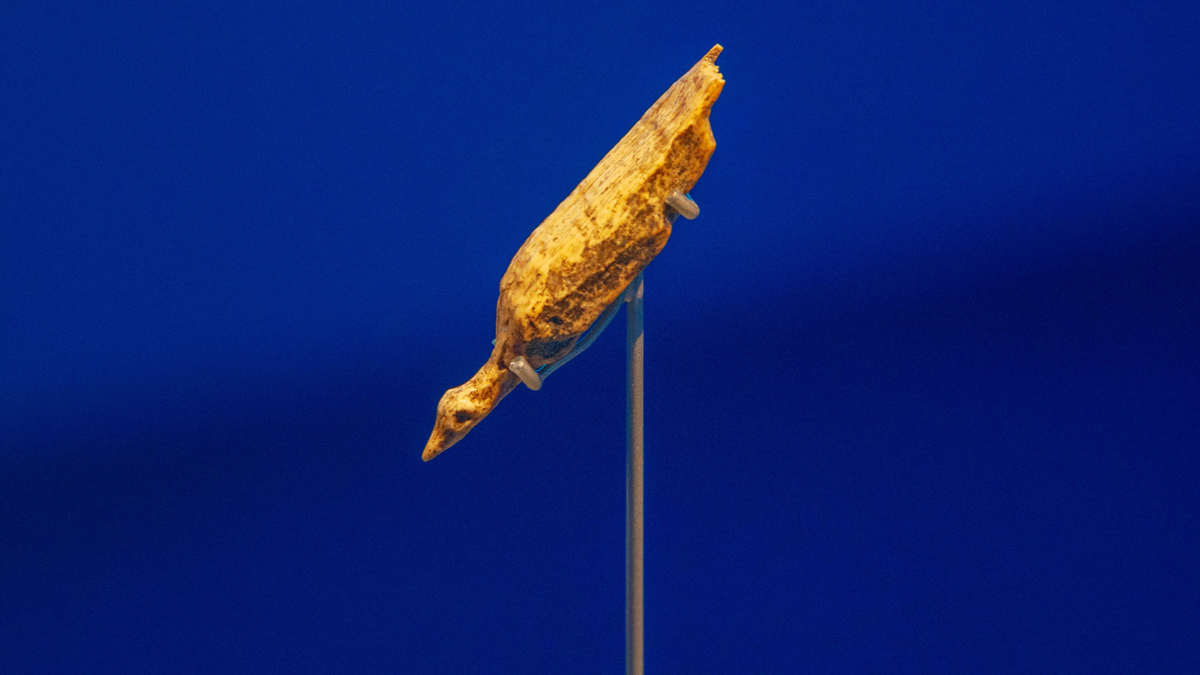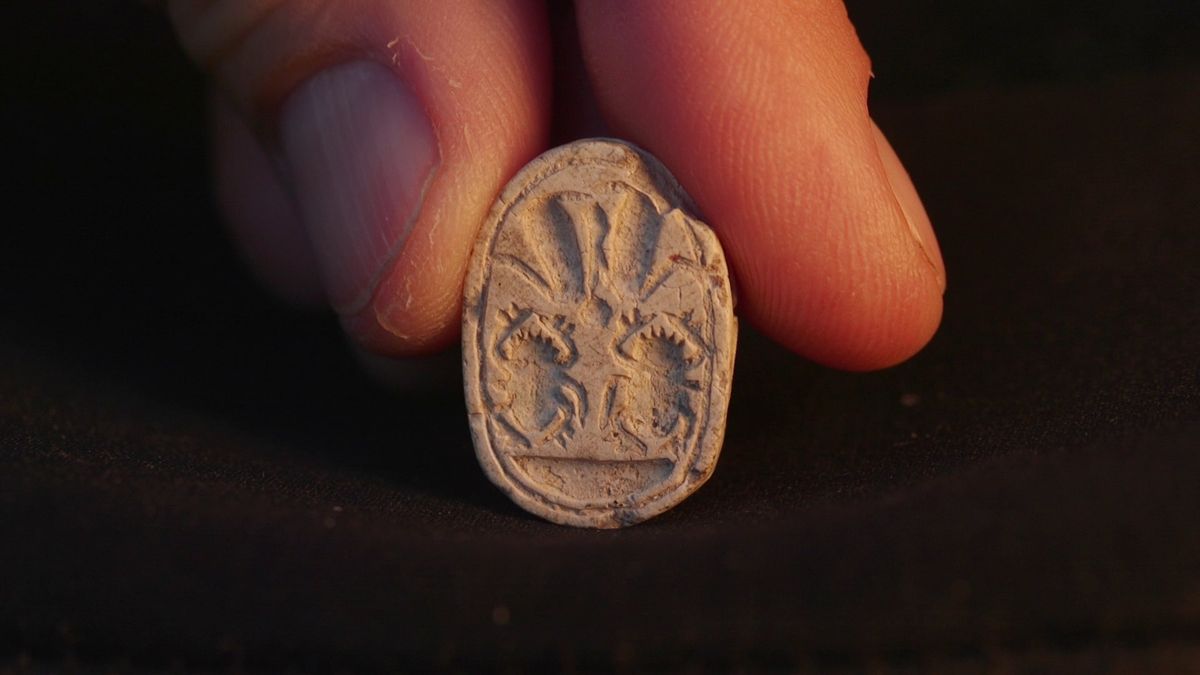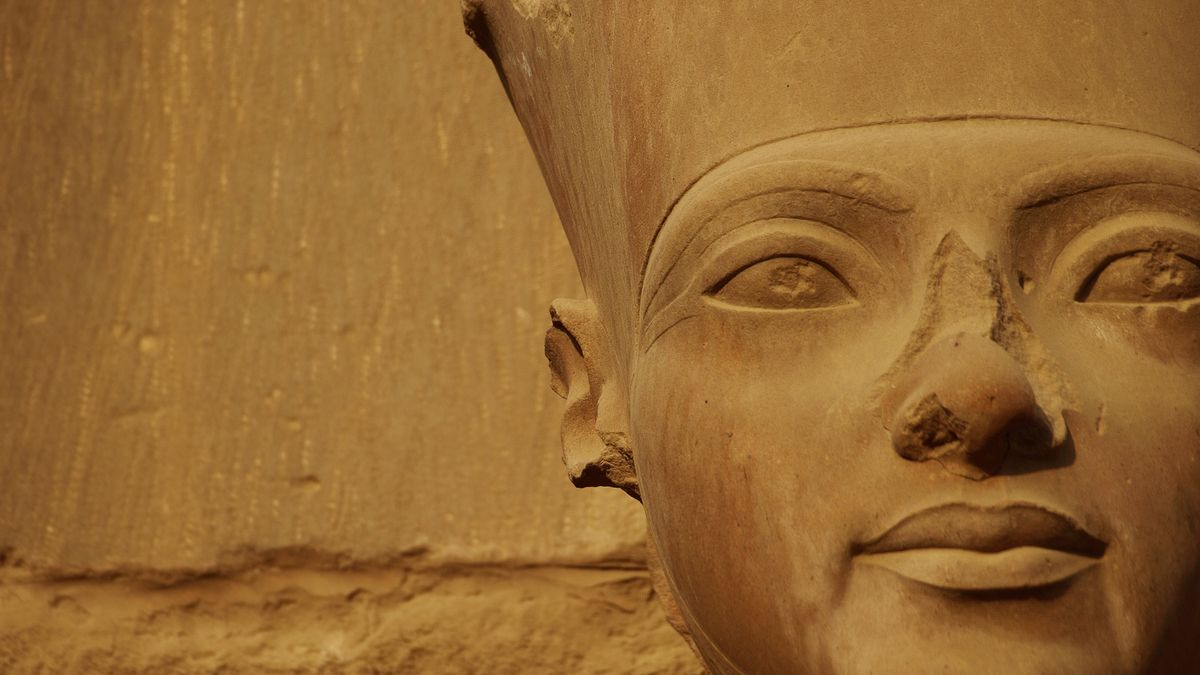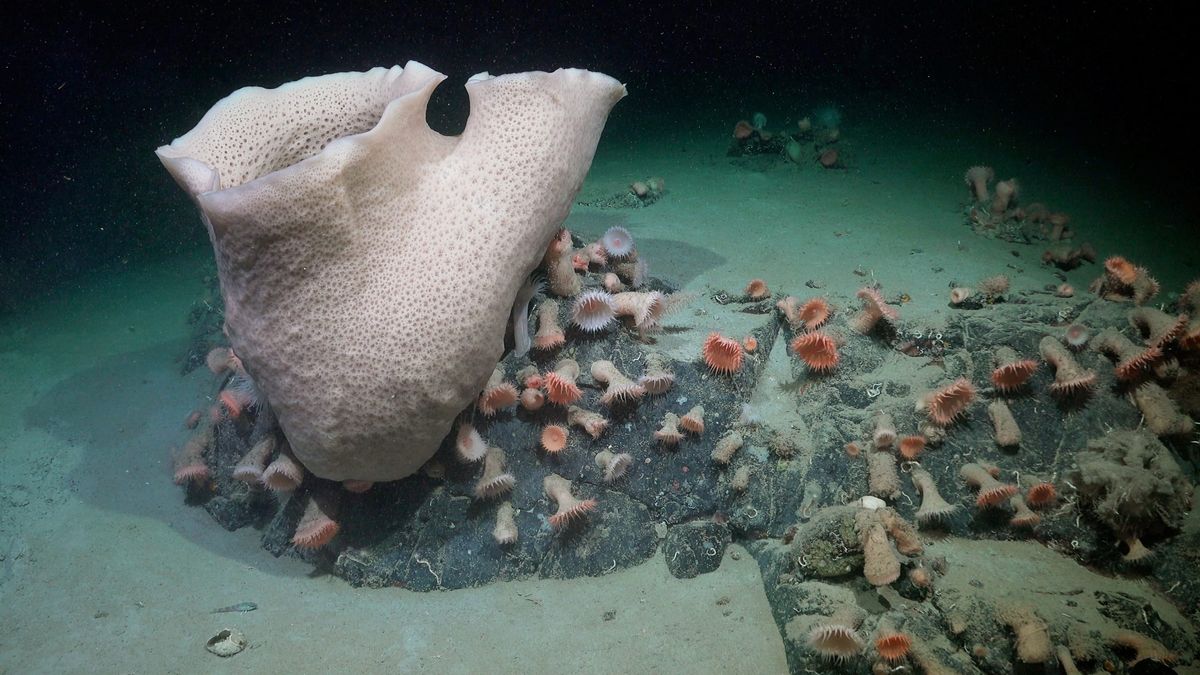Name: Hohle Fels water bird
What it is: Sculpture of a bird carved from mammoth ivory
Where it is from: Hohle Fels cave, Baden-Württemberg, southwestern Germany
When it was made: Around 40,000 years ago
Related: Tumaco-Tolita gold figurine: A 2,000-year-old statue with a ‘fancy nose ornament’ from a vanished South American culture
What it tells us about the past:
Archaeologists excavating Hohle Fels cave in southwestern Germany over two decades ago discovered three tiny figurines carved out of mammoth ivory. Dated to around 40,000 years ago, the sculptures represent some of the oldest examples of figurative art, and the tiny carved bird is the oldest depiction of a bird anywhere in the world.
The Hohle Fels bird sculpture was discovered in two parts: the body was found in 2001, while the rest was recovered in 2002. In the space of just 1.85 inches (4.7 centimeters), someone painstakingly carved the bird’s eyes, conical beak, short legs, tail and a series of lines representing feathers.
Based on the shape of the head and the extended neck of the bird, archaeologist Nicholas Conard, who described the discovery in the journal Nature in 2003, suggested that the animal was a water bird such as a diver, cormorant or duck.
The other two ivory sculptures discovered at Hohle Fels at the same time included a carved head of a horse or cave bear and a part human, part lion standing figure. Together, the three objects point to the area of the Upper Danube River as an important center of cultural innovation during the Upper Paleolithic period (50,000 to 12,000 years ago), Conard wrote in the study.
But the meaning of the Hohle Fels bird is uncertain. One argument is that these sorts of ivory figurines are a kind of “hunting magic” that a shaman might use to help ensure a successful hunt. Water birds were not typically food, though, and Conard suggested instead that these people simply depicted animals they admired.
The cave site of Hohle Fels was occupied during the Aurignacian period of prehistory (43,000 to 28,000 years before present), when early humans — once known as Cro-Magnons — thrived in Europe following the disappearance of the Neanderthals.
These groups created an explosion of art, some of which had never been seen before in human history, including so-called Venus figurines, musical instruments, elaborate jewelry and cave paintings. Much of this art involved drawing and carving animals that the Aurignacian people would have seen on a day-to-day basis.
MORE ASTONISHING ARTIFACTS
The Hohle Fels bird is not the oldest figurative sculpture in Europe. That title has been taken by another discovery from the same cave in 2008: the Venus of Hohle Fels, a sculpture of a woman with exaggerated breasts and thighs, which was created 41,000 years ago.
But the entire collection of ivory carvings at Hohle Fels suggests that something very new was happening around 40,000 years ago in the south German mountains, as the people who created the Aurignacian culture invented types of figurative art and music akin to what we have today.
Many of the Hohle Fels objects are on display at the Urgeschichtliche Museum (Museum of Prehistory) in Blaubeuren, Germany, and a 3D scan of the water bird can be accessed online.














